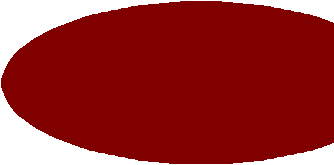Hard Drives
|
|
The hard drive is the workaholic of the P.C system, and the most important storage device in your P.C.
|
Hard drives are usually about 3.5 inches wide by 4 inches long and an inch or less thick, this is compared to hard drives of ten years ago that were 4 to 5 inches thick and filled a 5.5 inch bay.
|
The hard drive is not visible to you, it is inside the computer case and has no opening as it is sealed in a metal housing to prevent dust particles from crashing the platters, it sits in a 3.5 inch bay usually above or below your floppy drive. The hard drive is only connected to the motherboard via a ribbon cable, and is connected to the power supply.
|
|
The hard drive consists of typically as many as eight platters (made of metal or glass) (shown left), two read/write heads for each platter, a motor to spin the platters and a series of circuit boards and controllers.
|
The platters on which data is stored spin at speeds of up to 10,000 revolutions a minute, 167 spins each second. This means that the hard drives can read and write information more quickly than any other
|
storage device, including CD-ROM and DVD-ROM.
|
The platters are thin and have a magnetic coating, data on these platters is written and read by read/write heads, which are designed to ride on a microscopic cushion of air, without touching the platter.
|
Each time the hard drive is accessed to read or save a file it causes the read/write heads to burst into a flurry of movement that is performed with microscopic precision. So precise that the tolerances in a hard drive, the gaps between the heads and platters are not big enough to fit a human hair, so it is even more amazing that your hard drive does not crash more often, (when you accidentally knock it)
|
|
The read/write head consists of a tiny electro magnet. The shape of the head end acts like an air foil, lifting the read/write heads slightly above the spinning disk below. When the disk rotates under the read/write head, it can either read existing data or write new data.
|
The read/write heads are by far the most expensive parts of the hard disk. They are incredibly tiny, in modern hard disks they float between 5 and 12 micro inches (millionths of an inch) above the disk. When the PC is shut down, they are auto parked on a designated area of the disk, so they will not be damaged during transport.
|
|
The main types of hard drive are documented below:
|
|
MFM, RLL, ESDI = Older standard for hard disks.
|
|
IDE = Simple, primitive interface. Data is delivered on the ISA bus, resulting in low transfer speed.
|
|
EIDE = An improvement of IDE. Data is delivered on the PCI bus, which results in high transfer speeds. Ultra DMA is the best nterface among the EIDE varieties.
|
|
SCSI = A high end controller system, where the units are connected to a special (expensive) controller. The hard disks are generally of the highest quality, they are fast and with a long life span.
|










